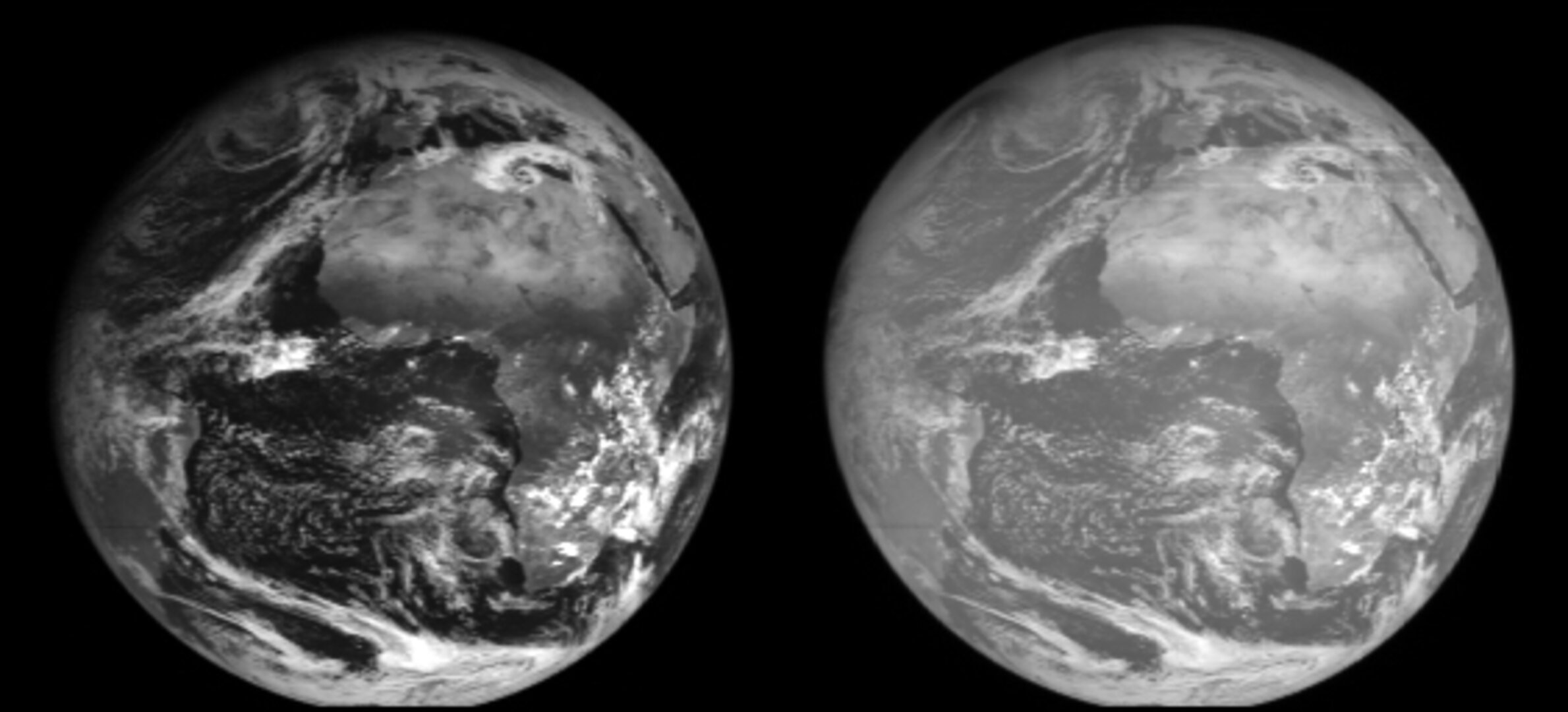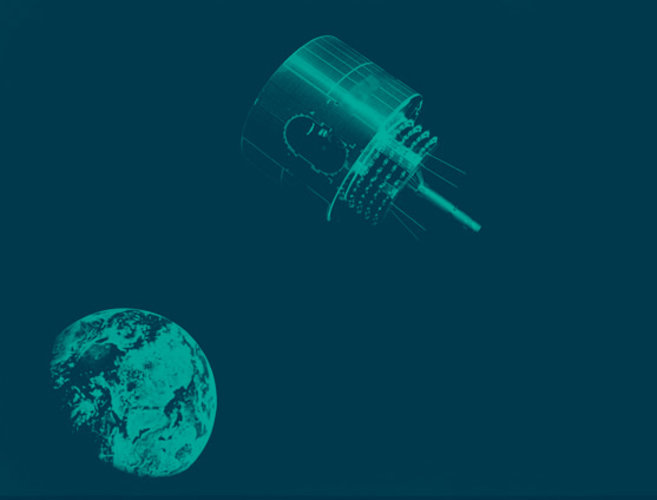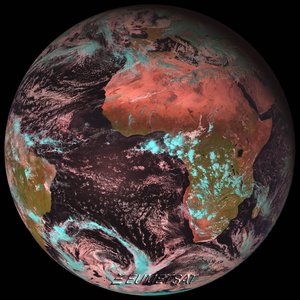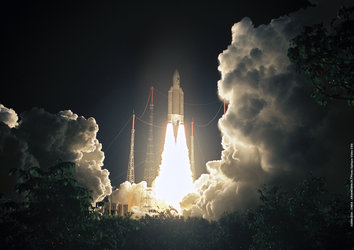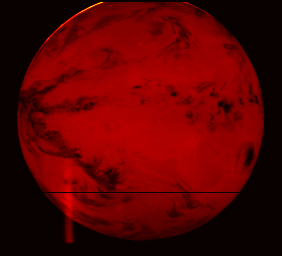First images from GERB
The Geostationary Earth Radiation Budget (GERB) onboard the MSG-2 satellite captured its first images on 1 February 2006. These twin images measure our planet’s emitted thermal and reflected or scattered solar energy.
This achievement comes just a week after the first image was acquired by MSG-2’s main Spinning Enhanced Visible and Infra-red Imager (SEVIRI) sensor, designed for operational meteorology. Launched on 21 December 2005, MSG-2 was designed and procured by ESA on behalf of EUMETSAT, European Organisation for the Exploitation of Meteorological Satellites.
GERB is a novel, small instrument flying as a science ‘passenger’ on the MSG series. The initial GERB already in orbit has made the first ever geostationary measurements of the Earth’s energy balance.
This is the net balance between incoming radiation from the Sun, and outgoing radiation from the Earth, known as the 'Earth Radiation Budget' – which is the energy source for the planet's atmospheric system and the ultimate driver of weather phenomena and climate.
What GERB does is continuously measure the sunlight reflected or scattered back from the Earth plus the heat radiation radiating from it. First it measures the total radiation, next a filter is passed in front of its measuring array so it measures only the short wavelength radiation. A figure for long wavelength radiation can simply be derived by subtracting the short wavelength value from the total.
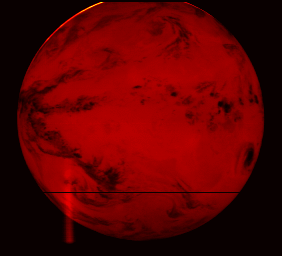
While the incoming energy of the Earth's Radiation Budget stays broadly consistent within seasonal norms, the outgoing energy can vary considerably over a period of hours or days because of what is termed 'radiative forcing', mainly from changes in concentrations of clouds, aerosols or water vapour. GERB, like SEVIRI, performs a new measurement every 15 minutes, working on a continuous basis.
"The GERB sensor on the first MSG has already been a great success, and this news that No 2 in the series is now operating is splendid news for the UK and international climate research communities," said Professor John Harries of Imperial College, GERB Principal Investigator.
"Four GERB instruments in all will fly on the MSG satellite series, spanning over a decade of new, precise observations that are telling us a great deal about the processes of importance to climate. GERB is a great success for our team of British and European scientists and engineers."
About MSG
Meteosat Second Generation (MSG) is a joint project between ESA and the European Organisation for the Exploitation of Meteorological Satellites (EUMETSAT) and follows up the success of the first generation Meteosat weather satellite series with a larger design boasting higher performance.
The first in a planned series of MSG satellites was launched in 2002, entering into service with EUMETSAT in early 2004 and now renamed Meteosat-8. The second MSG launched on December 2005. Once commissioning is complete it will become operational as Meteosat-9, with Meteosat-8 serving as a ‘hot back-up’ to ensure continuity of service.
About GERB
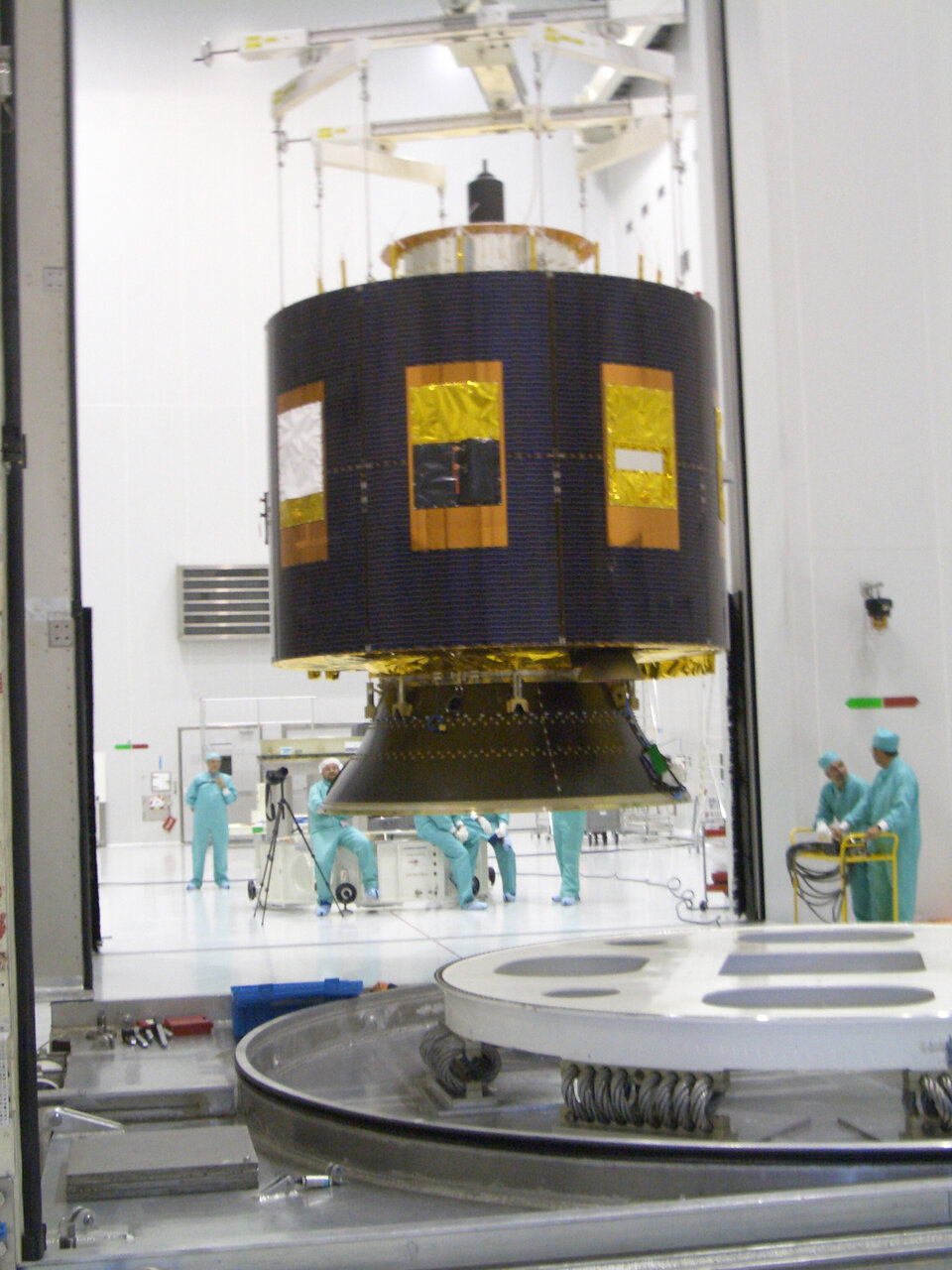
Responding to an Announcement of Opportunity by ESA, lead funding for the original GERB instrument came from the UK Natural Environment Research Council (NERC). The instrument was developed by a European consortium headed by Imperial College, London, where the Principal Investigator (PI) is Prof. John Harries.
The UK Rutherford Appleton Laboratory (RAL) has held the Project Manager role, as well as being the technical authority. Major technical and financial contributions have come from Belgium (Royal Meteorological Institute of Belgium - RMIB, Advanced Mechanical and Optical Systems - AMOS) and Italy (Officine Galileo). The University of Leicester provided the detector arrays that ultimately sense the radiation from the Earth.
Subsequent GERB instruments are being funded by MSG operator EUMETSAT, the European Organisation for the Exploitation of Meteorological Satellites, by contracts to the same consortium members and structure as for the first instrument.
RAL is responsible for processing, archiving and distribution of GERB data, with RMIB performing additional processing. Imperial College in London is performing instrument calibration as well as scientific leadership of the consortium.


